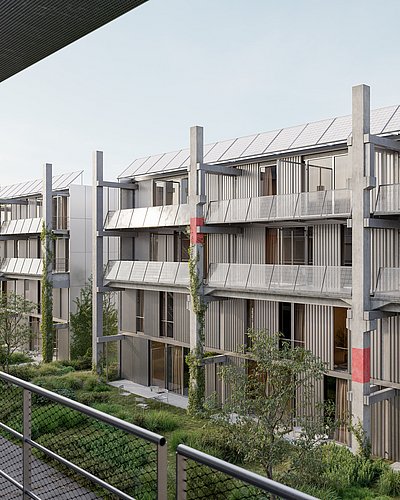Welcome at the Interface Culture program website.
Acting as creative artists and researchers, students learn how to advance the state of the art of current interface technologies and applications. Through interdisciplinary research and team work, they also develop new aspects of interface design including its cultural and social applications. The themes elaborated under the Master's programme in relation to interactive technologies include Interactive Environments, Interactive Art, Ubiquitous Computing, game design, VR and MR environments, Sound Art, Media Art, Web-Art, Software Art, HCI research and interaction design.

The Interface Culture program at the Linz University of Arts Department of Media was founded in 2004 by Christa Sommerer and Laurent Mignonneau. The program teaches students of human-machine interaction to develop innovative interfaces that harness new interface technologies at the confluence of art, research, application and design, and to investigate the cultural and social possibilities of implementing them.
The term "interface" is omnipresent nowadays. Basically, it describes an intersection or linkage between different computer systems that makes use of hardware components and software programs to enable the exchange and transmission of digital information via communications protocols.
However, an interface also describes the hook-up between human and machine, whereby the human qua user undertakes interaction as a means of operating and influencing the software and hardware components of a digital system. An interface thus enables human beings to communicate with digital technologies as well as to generate, receive and exchange data. Examples of interfaces in very widespread use are the mouse-keyboard interface and graphical user interfaces (i.e. desktop metaphors). In recent years, though, we have witnessed rapid developments in the direction of more intuitive and more seamless interface designs; the fields of research that have emerged include ubiquitous computing, intelligent environments, tangible user interfaces, auditory interfaces, VR-based and MR-based interaction, multi-modal interaction (camera-based interaction, voice-driven interaction, gesture-based interaction), robotic interfaces, natural interfaces and artistic and metaphoric interfaces.
Artists in the field of interactive art have been conducting research on human-machine interaction for a number of years now. By means of artistic, intuitive, conceptual, social and critical forms of interaction design, they have shown how digital processes can become essential elements of the artistic process.
Ars Electronica and in particular the Prix Ars Electronica's Interactive Art category launched in 1991 has had a powerful impact on this dialog and played an active role in promoting ongoing development in this field of research.
The Interface Cultures program is based upon this know-how. It is an artistic-scientific course of study to give budding media artists and media theoreticians solid training in creative and innovative interface design. Artistic design in these areas includes interactive art, netart, software art, robotic art, soundart, noiseart, games & storytelling and mobile art, as well as new hybrid fields like genetic art, bioart, spaceart and nanoart.
It is precisely this combination of technical know-how, interdisciplinary research and a creative artistic-scientific approach to a task that makes it possible to develop new, creative interfaces that engender progressive and innovative artistic-creative applications for media art, media design, media research and communication.
3. Praxisgespräch mit Parabase | Slow Events
2. Dezember 2025, 18.00 Uhr Tabakfabrik Linz, Marktplatz
Carla Ferrando vom Architektur-Büro Parabase zu Gast beim Forum Baukultur.
Gast des dritten Praxisgesprächs ist die katalanische Architektin Carla Ferrando. Gemeinsam mit ihrem Partner Pablo Garrido Arnaiz gründete sie im Jahr 2023 das in Basel ansässige Architektur-Büro Parabase. Ihre Arbeit in der Entwicklung und Umsetzung von Architekturprojekten verbinden die beiden mit Forschung und Lehre. So haben sie in der Vergangenheit an der Bauhaus-Universität in Weimar unterrichtet, waren Workshopleiter*innen an der Porto Academy 2025 und sind derzeit Gastprofessor:innen an der ETH Zürich.
Mit ihrem Siegerentwurf für den Wettbewerb zum Basler Walkeweg, dessen Vorgabe es war, ein Maximum an Bauteilen einer Abbruchbaustelle wiederzuverwenden, hat sich das Architekten-Duo international einen Namen im Bereich „Re-Use“ gemacht.
Parabase versteht Gebäude nicht als isolierte formale Ausdrucksformen, sondern als materielle Zeugnisse sozialer und wirtschaftlicher Geschichte. Kreislaufstrategien wie Wiederverwendung, Umnutzung und Recycling stellen konventionelle Produktions- und Konsumweisen in Frage. Diese Methoden verwerten Abfälle, hinterfragen standardisierte Bauprozesse und bekämpfen Verfall, indem sie Materialien ein zweites Leben geben und zu einer neuen Lesart unserer gebauten Umwelt anregen.
In ihrem Vortrag wird Carla Ferrando die Herausforderungen und Chancen zirkulärer Praktiken reflektieren. Trotz ihrer Dringlichkeit und Relevanz haben diese immer noch Schwierigkeiten, im architektonischen Diskurs Fuß zu fassen. Ferrando möchte darüber nachdenken, wie diese Strategien mit umfassenderen kulturellen Ambitionen verknüpft und tiefer in der Architektur verankert werden können.
Wäre es möglich, alle Konventionen hinter sich zu lassen und eine Architektur zu schaffen, die aus einem tiefen Verständnis des Bauens entsteht und dieses als technischen, kulturellen und politischen Akt und nicht als bloße Designübung betrachtet?
Die Veranstaltung findet mit Unterstützung der Kammer der Ziviltechniker*innen | Architekt*innen und Ingenieur*innen Oberösterreich und Salzburg statt.
Tabakfabrik Linz,
Haus CASABLANCA, Marktplatz, 1. OG,
via Eingang B1 (B-Lift/ B-Stiege)
Peter-Behrens-Platz 8/9
